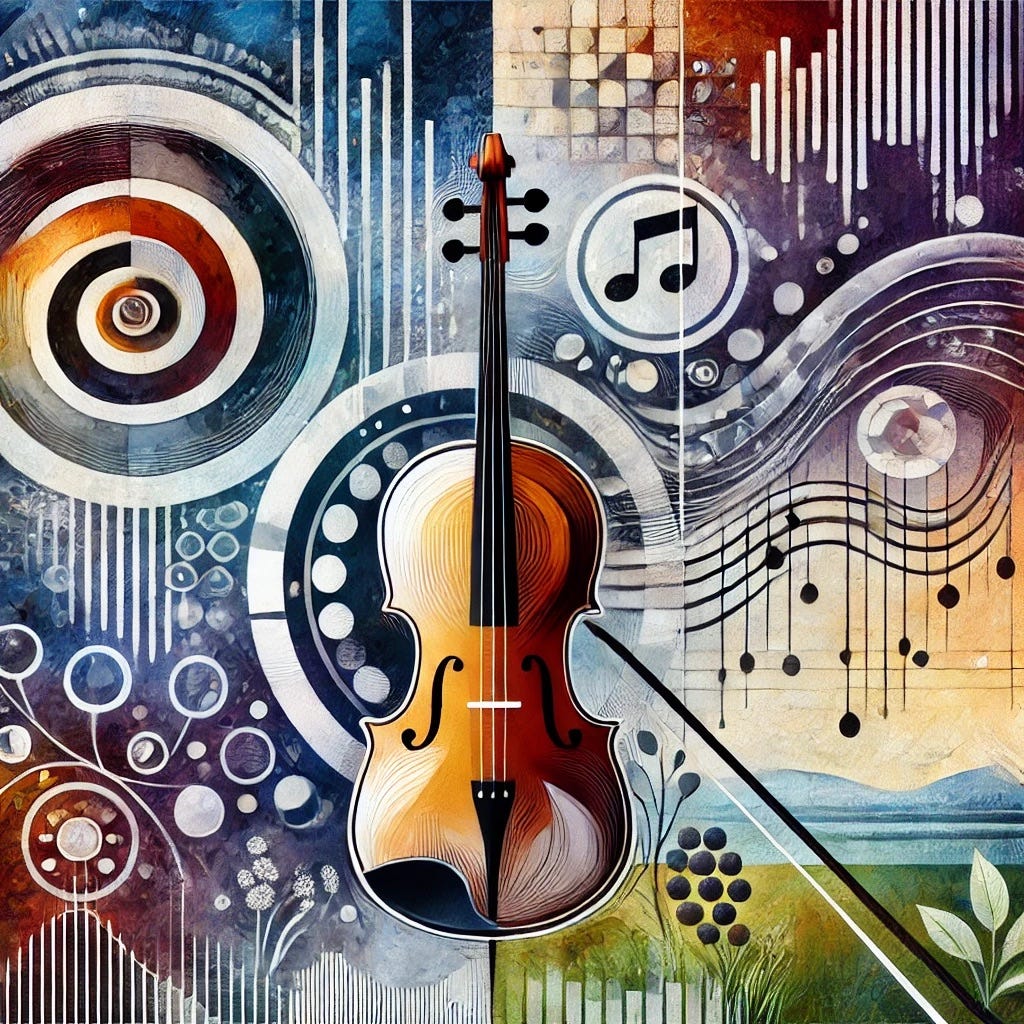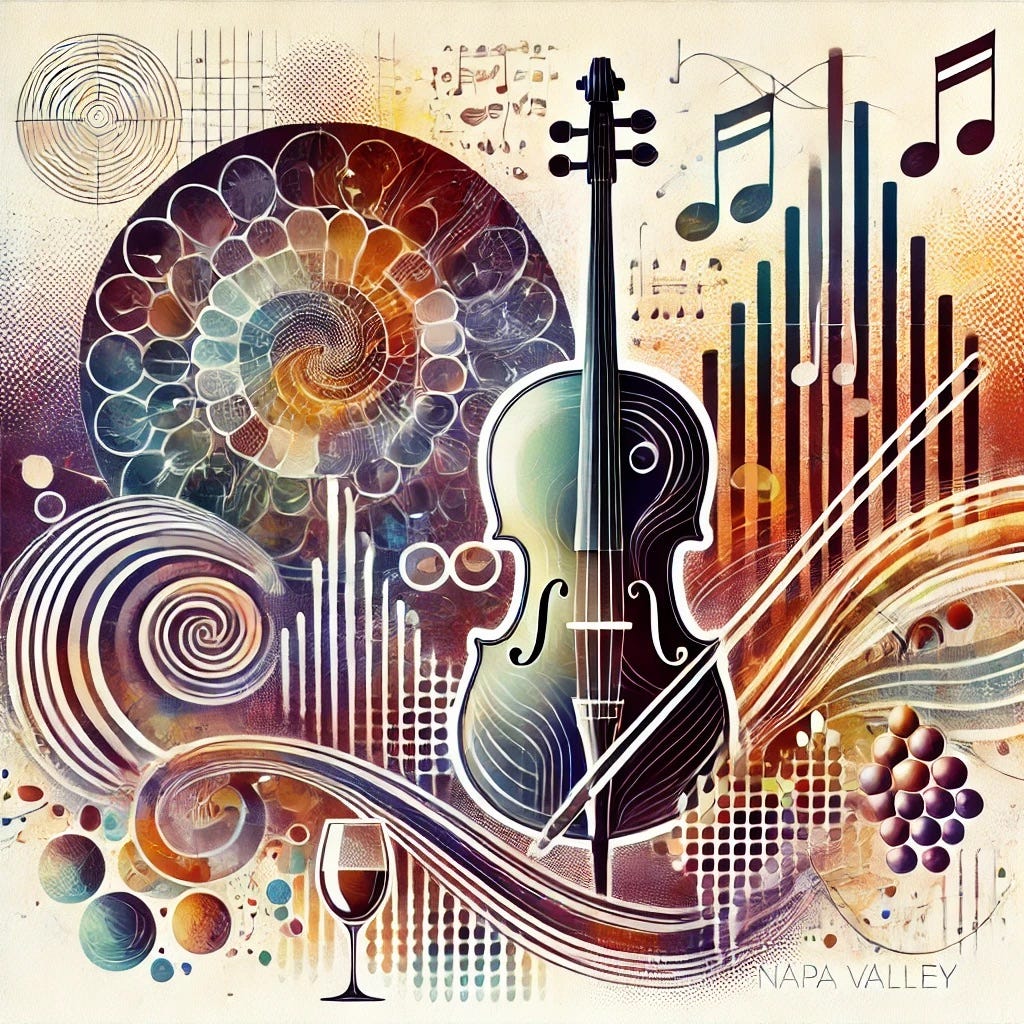Weekender Encore: Saariaho's Soundscapes — A Napa Festival
By Sasha Paulsen
NAPA VALLEY, Calif. — New Music: what is it? Chamber music that is not Mozart or Beethoven. Or is it?
I must admit that I have not heard enough of it to render an answer.
But this is about to change because Aug. 16-18, New Music Decanted will present its inaugural New Music Festival at the Napa Valley College Performing Arts Center.
It’s an entire weekend to discover something that is, well, different.

The festival is the vision of Eric Moore, a Bay Area musician and teacher who is founder and executive director of New Music Decanted. Moore has presented 45 concerts with more than 100 pieces of music across Napa, Sonoma and San Francisco since establishing the nonprofit in Napa in 2018.
I first heard Moore perform on his cello in a salon hosted by Napa fan and supporter Monty Sander. In a living room packed with people perched on sofas and chairs, we listened to music that was definitely different, slightly strange and entirely intriguing — new.
With the announcement of the upcoming festival, I found Moore in Paris, and emailed him a long list of questions. First of all: what is New Music?
“New Music is really just classical music being written today, typically using classical instruments with instrumentalists trained originally in the classical tradition,” Moore replied. “But it typically requires a certain degree of specialization because composers are (still) pushing the boundaries of what music is; in most instances we’re looking at traditional music notation, but with an extended set of symbols beyond what we normally find in the music of Bach and Beethoven.”
New Music Decanted is composed of specialists in reading and performing this kind of classical music, and their programs are “rooted in Napa wine tradition,” Moore said. “For example, ‘side-by-side pairings’ present new works alternating with standard repertoire; ‘barrel tastings’ feature premieres, ‘terroir samplings’ feature the music of a specific region.”
The three-day August festival is a “composer vertical,” featuring 42 works by the Finnish composer Kaija Saariaho (1952-2023) performed across six concerts.

Saariaho is considered a leading voice of her generation of composers in her native Finland and worldwide, Moore said. She studied composition in Helsinki, Freiburg and Paris, where she lived from 1982 until her death from a brain tumor. Her studies and research at IRCAM, the Parisian center for electroacoustic experimentation, had a major influence on her music. IRCAM is a research institution not only interested in training its students how to write effectively, but also in the science of music, Moore said.
“Saariaho was frequently listed among the greatest composers of all time,” Moore said. “A BBC poll from 2022 listed her as the most important then-living composer and the most important female composer of all time. She was placed squarely between Haydn and Brahms on the list. Her passing was a huge loss for the classical community.”
According to Moore, Saariaho was a “spectralist” composer. “(This is) a group that was interested in using a spectroscope to map the acoustical phenomena that happen when pitch and/or sound is produced.” Other notable spectralists include Tristan Murail, Georg Friedrich Haas, Jonathan Harvey and Eric Tanguy.
“Most of her music can be imagined through a lens where she asked herself ‘What sounds are present when a cello is bowed?’ There’s the pitch, of course, but also the crunching of the hair of the bow on the string. And the other pitches that happen in different octaves hidden away behind the main pitch (the “overtones”). And the timbre of the note itself makes a difference, too, and whether the cellist is doing vibrato or not… and she plays with all of those elements like a winemaker, mixing in this grape and that grape until they’re balanced but complex but drinkable.”
“(She) frequently uses symbols doing things like asking a clarinetist to play two notes at once (a ‘multi-phonic’) or for a violinist to play a note exactly half-way between the normal half-steps found on a piano (a ‘quarter tone’) or asking the cellist to over-press with the bow to make it crunch,” Moore said.
This scientific approach is in the background, however, Moore added. “The audience need not be aware that it is happening. What she was producing with it was, first and foremost, heartfelt and meaningful work. She wrote extensively for her friends. She wrote an incredible amount for the cello: five cello concertos, six solo cello works, and two large works for cello and electronics, in addition to duos and chamber music, because of her life-long friendship with a cellist (Anssi Karttunen).”
Moore presented the U.S. premiere of one of those works, Lullaby for Solo Cello, at Pacific Union College a few months ago. “And I am excited to give the U.S. premiere of ‘Étincelles for Solo Cello’ and ‘Im Traume for Cello and Piano’ (with Dr. Daniel Pesca, professor of composition at the Eastman School of Music) during the festival.”
New Music Decanted had been toying with the idea of a hybrid concert season and festival model, and a Saariaho retrospective seemed like a fitting launch, Moore said.
“It follows two months after SF Opera’s run of her opera ‘Innocence,’ and a number of Bay Area organizations saw fit to program her music this year in memoriam. Left Coast Chamber Ensemble, an organization from which two performers [Leighton Fong and Anna Presler] will be joining us, recently presented a concert of her music.”
“The festival is based in Napa because that’s where our roots are,” Moore said. “We’re extremely honored to be sponsored by Napa Valley College, which is hosting the festival, and we’re looking forward to bringing some phenomenal performers back to Napa from the Bay Area.”
The Friction Quartet was in residence at Lincoln Theater, and they will be doing a full concert to kick off the festival on Friday, Aug. 16 at 1 p.m.
Among the performers is cellist Natalie Raney who joined Moore for the premiere of his cello quintet, Soliloquy, in Napa in 2022.
“We’re excited to share this music with Napa because it’s phenomenal music worth hearing, and for most people it is probably unlike any other music that they have heard before. A great starting point might be Saariaho’s masterpiece, ‘Sept Papillons (Seven Butterflies) for Solo Cello.’”
In this piece, he said, “the cellist’s left hand and bow arm evoke the movements of butterflies, and each of the seven movements invites the listener to imagine different (unspecified) species of butterflies.”
Moore said he is also looking forward to introducing Napa “to a number of other fantastic and talented performers who are a stone’s throw away,” as well as performers from Southern California, the East Coast and Europe.
Twenty-four performers altogether will present the complete works of Saariaho on Aug.16, 17 and 18, with different shows at 1 and 7:30 p.m. each day, plus lectures, receptions and artist meet and greets.
Individual tickets are available online and range in price from $65 to $125. For more information visit their website. Follow New Music Decanted on Instagram and Facebook @newmusicdecanted.
Napa Valley College Performing Arts Center is at 2277 Vallejo Highway, Napa.
If today’s story captured your interest, explore these related articles:
Sasha Paulsen is a Napa Valley-based novelist and journalist.





Another excellent article by Sasha Paulsen! This sounds like a wonderful musical event. I recommend it to anyone with a mind open to new expriences.